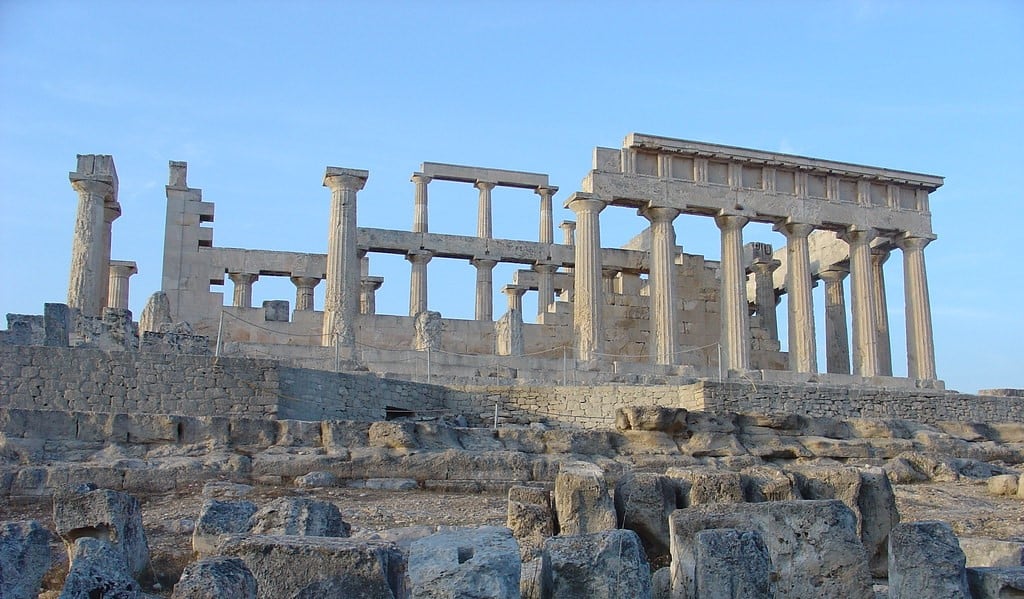
The ancient Greek Temple of Aphaea on the Greek island of Aegina is one of the most impressive archaeological sites in the country.
The goddess Aphaea, who was associated with agriculture and fertility, is thought to be a local deity, because the sanctuary complex on Aegina is the only place where the goddess was worshiped.
Aegina is located in the Saronic Gulf just 27 kilometers (16 miles) away from the Greek capital of Athens.
The impressive temple, which was built in the Doric style, is located atop a hill that is covered in pine trees. The hill is about 160 meters (524 feet) high and is found on the eastern side of the island just 13 kilometers (8 miles) away from the main town and its port.
The Temple of Aphaea was a prominent sanctuary site in the sixth century BC, but, when Athens took control of Aegina in the fifth century, its importance began to decline, and it was abandoned in the second century BC.
Ancient Greek Temple of Aphaea on Aegina
The site itself is thought to have first been used for worship in the Mycenaean period, which ran from c. 1750 BC to 1050 BC. A large number of Bronze-age figurines have been found at the site, some of which may be Minoan in origin.
Archaeologists have discovered the remnants of an older temple, built around 570 BC, underneath the current structure, which was constructed around 500 BC.
The original temple structure likely burned down in a fire, but the newer, extant temple contains undamaged elements of the older temple in its foundation, which kept them well-preserved.
Analysis of the site first began in the early 20th century by German archaeologists from the German school in Athens, but excavations could not be carried out then, as they risked damaging the temple itself.
Extensive excavations at the site started in the 1960s, when German archaeologists were able to study the site without damaging the temple. During their digs at the Temple of Aphaea, they discovered the remains of the older temple at the monument’s foundations.
The stunning beauty of the Temple of Aphaea, which is highlighted by its beautiful surroundings, has inspired travelers for centuries. The famed British landscape painter J.M.W. Turner was particularly fond of the site and drew it many times. The ancient Greek travel writer Pausanias also visited the site during his sojourn across the ancient world.
The Temple of Aphaea on Aegina is perhaps most famous for its unique pedimentary sculptures, which were once brightly painted.
Both sculptural arrangements depict scenes from the Trojan War in which warriors from Aegina were said to have fought bravely.
One pediment shows the hero Herakles and other Greek soldiers fighting against a Trojan king, Laomedon, while the other depicts a battle between the Greek King Agamemnon against the Trojan ruler Priam in which the famed fighters Ajax and Achilles took part.
See all the latest news from Greece and the world at Greekreporter.com. Contact our newsroom to report an update or send your story, photos and videos. Follow GR on Google News and subscribe here to our daily email!



